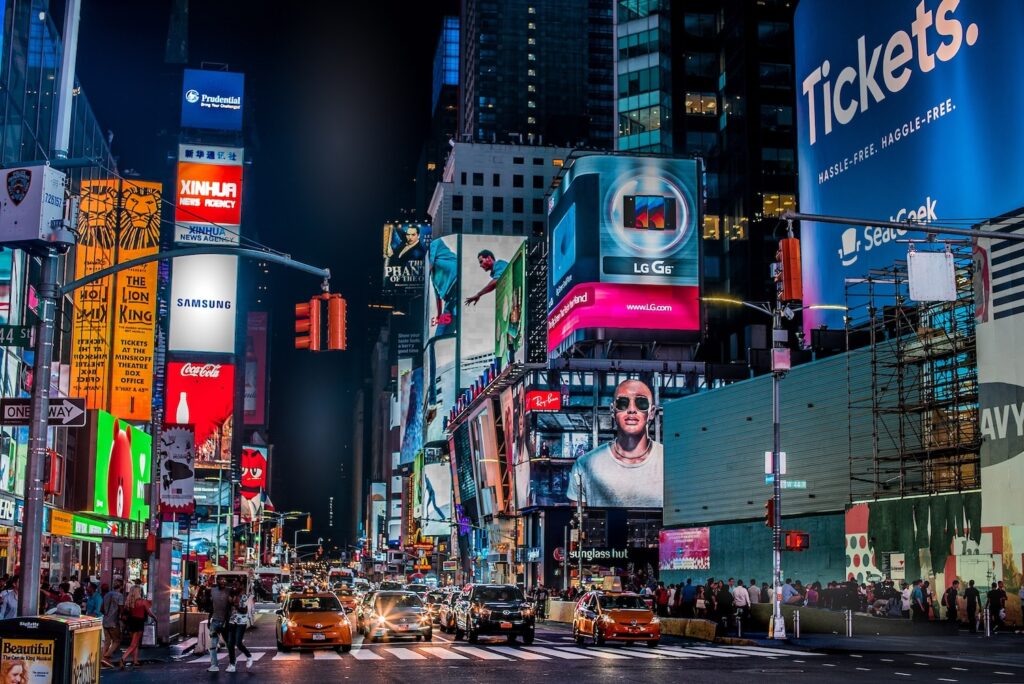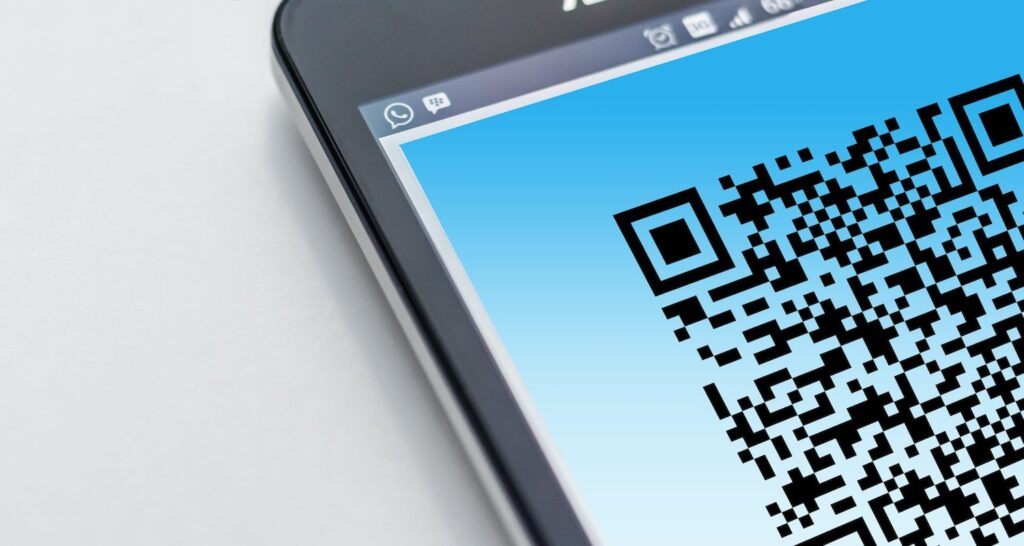
QR code marketing is leading the charge in 2023. These digital wonders, crafted using QR code generators, offer direct gateways from tangible products to the vast online world.
Ever spotted a product and wanted to know more? Most likely, a QR code was there, waiting to dish out all the juicy details. This speed and simplicity make QR codes a marketer’s dream tool.
In this guide, we’ll break down how to use this tool effectively. Whether you’re just getting started or looking to refine your approach, let’s explore how these codes can elevate your marketing strategies this year.
What Are QR Codes?
QR codes, or “Quick Response” codes, are those small square graphics you’ve likely seen on ads, products, or event tickets. At their core, they’re two-dimensional barcodes. They can be scanned using a smartphone user’s camera, and they often link to a website, product page, video, or other digital content.
For businesses, it’s a smart way to contactless share, track, and engage. In fact, by 2025, it’s expected that QR code scanning will expand to 99.5 million in 2025. Their integration into print ads and other marketing collateral has changed the face of the marketing industry.
But how exactly are these being leveraged in the intricate retail marketing world? It goes beyond just email marketing campaigns.
8 Ways You Can Use QR Codes In Marketing
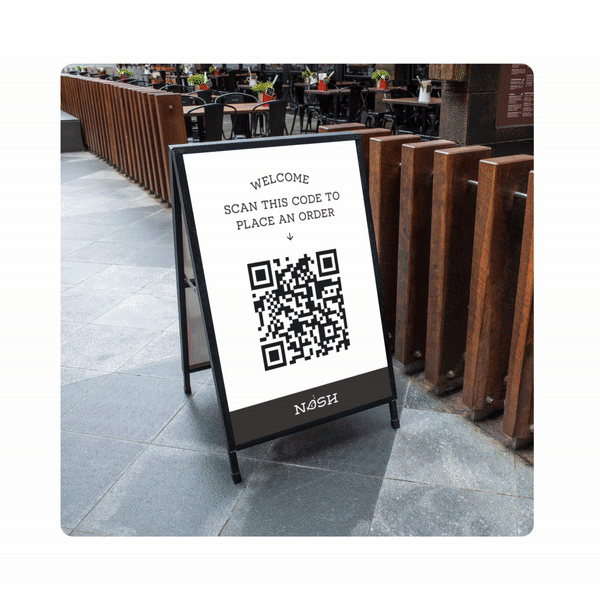
Let’s explore the most effective and creative ways you can leverage these in your marketing goals:
1. Direct To Your Online Presence
Today, consumers crave information at their fingertips. QR codes are your secret weapon to deliver just that.
Imagine a shopper intrigued by a new skincare product in your store. While the label tells them the basics, they’re eager to know more:
- How effective is it?
- Are there any video tutorials?
- What do other users have to say?
In the same way, consider more complex home equipment like solar panel kits or inverters. Someone might be interested in a compact solar kit and want to delve deeper into its specifications, installation guide, or customer testimonials.
Strategically place a QR code to lead them straight to these details, saving them the manual search hassle. When you add a QR code to your product or its shelf, it’s like opening a direct portal to your online universe.
A study by MobileIron found that QR code usage surged by 58% during the COVID-19 pandemic, and 67% agree that QR codes make life easier in a touchless world. This showcases how consumers are readily embracing this technology.
Consider the success of a brand like L’Oreal. They incorporated QR codes, leading shoppers to video tutorials on how to apply their makeup products. This provides value and enhances the shopping experience, which, in turn, boosts sales.
Your website is filled with valuable insights: deep product details, candid customer online reviews, and engaging demo videos. When you leverage QR codes, you offer your in-store shoppers a more enriched, multi-dimensional experience. If you’re running any online-exclusive promotions, a simple scan makes sure your in-store customers remain in the loop.
2. Collect Valuable Customer Insights
Code campaigns are not just about providing information but also about collecting first-party data. When customers scan a QR code, they don’t just get information. You do, too.
Each scan can reveal where they found the code when they scanned it, what device they used, and even how long they interacted with the content it linked to.
Consider a cafe that introduces a new seasonal drink. They quickly gather feedback by using a QR code linked to a short survey on their table tents. Questions like, “How did you like our new Pumpkin Spice Latte?” or “What other flavors would you recommend?” can offer direct insights.
As more people scan and give feedback, the cafe can adjust its menu to what customers really want. Plus, using Jotform’s data collection methods with QR codes makes collecting this feedback easy and improves the whole experience for customers.
With QR codes, you can also track long-term trends. Notice a spike in scans during a particular month? Maybe it’s tied to a seasonal trend or a marketing campaign. Or perhaps a drop in scans? It might be time to rethink where and how you’re displaying those codes.
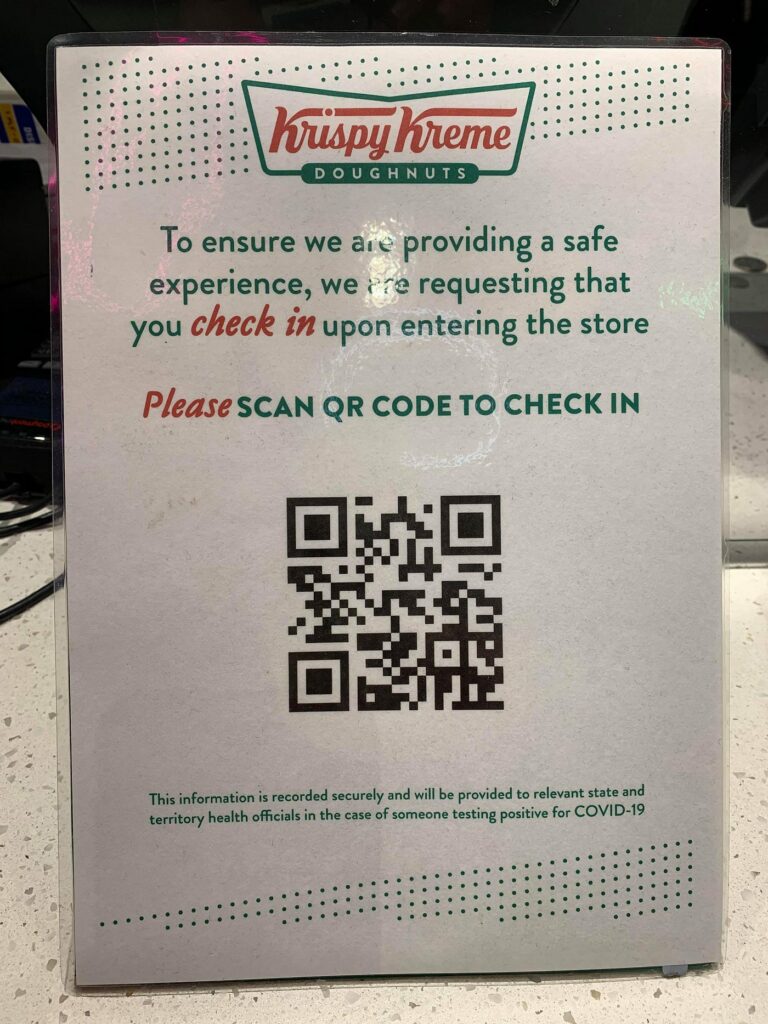
3. Promote Exclusive Savings
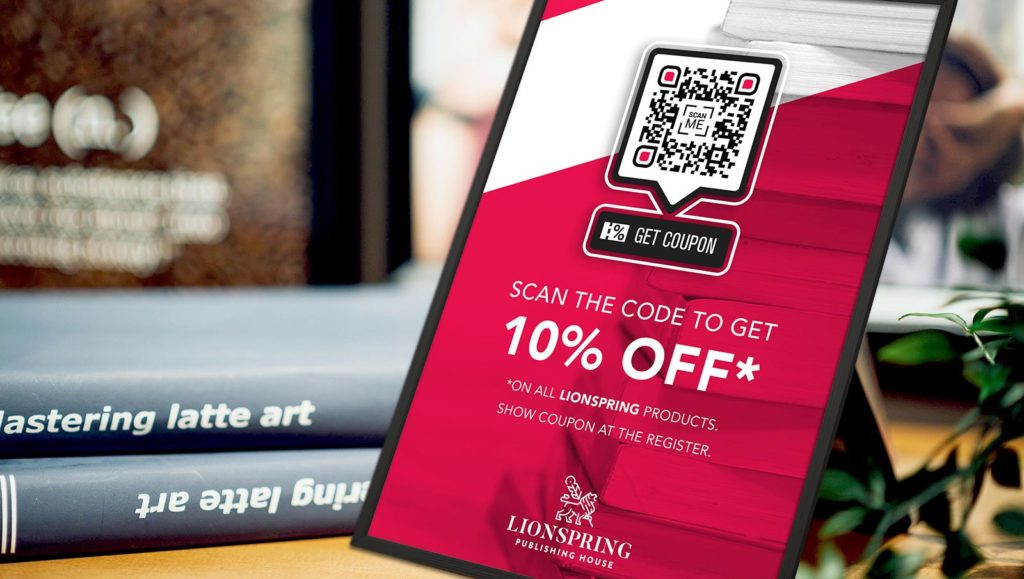
Everyone loves a good deal, and QR codes are a brilliant way to hand out exclusive savings directly to your customers. It’s like giving them a secret key to unlock special offers.
In fact, according to a study by Juniper Research, QR coupon redemptions are projected to hit $5.3 billion by 2024. This proves that people are not just scanning QR codes; they’re using them to save money.
For instance, imagine you’re walking into your favorite clothing store and spot a QR code next to the latest summer collection. You scan it, and you’ve got an exclusive 20% off just for you. This makes customers feel valued and also encourages immediate purchases.
QR codes also let you track which deals are most popular. For instance, by using a QR code linked to a sport nutritious site, customers can compare two different pre-workout supplements. If you see everyone scanning the QR code for a particular discount, you’ll know which supplement is a hit, and you can use that info for future promotions.
For businesses, this isn’t just about giving away discounts. It’s a strategic move to get insights into what your customers love while driving sales and fostering brand loyalty.
4. Engage Passerby With Dynamic-Window Interactions
Imagine walking by a store window, and instead of just a static display, there’s a QR code inviting you to interact. That’s the power of dynamic-window interactions. It turns regular windows into gateways of engagement, tempting passersby to dive deeper into what you offer, even when the store’s closed.
A study by Grand View Research revealed that the global market for interactive display screens is expected to reach $70.06 billion by 2030. This growth hints at the average user’s increasing desire for interactive experiences while shopping.
Take, for instance, a shoe store. It’s after hours, but a QR code on the window showcases a teaser like “Scan to see our latest collection in action.” A passerby scans it and gets redirected to a video showcasing the shoes on different terrains. This keeps the customer engaged while also creating a memorable brand experience.
Or think of a cafe that’s about to introduce a new menu item. Their window QR code links to a sneak peek with mouth-watering images or even a special discount for those who scan and come back during operating hours.
The beauty of dynamic-window interactions is that they make use of spaces often overlooked in traditional marketing. They create an interactive, 24/7 marketing opportunity, making sure that even after hours, you can connect, engage, and excite potential customers.
5. Capture & Nurture Potential Buyers
QR codes transform how you connect with potential customers. They aren’t just about giving quick information. Instead, they provide a strategic way to build and maintain a relationship with people who show interest in a product or service.
For instance, at a tech exhibition, a gadget may come with a QR code for an in-depth video review. After the review, viewers could be prompted to sign up for a newsletter, giving the business a direct line to share more related content, updates, or exclusive offers.
This strategy is about understanding a potential buyer’s interest and catering to it so they receive relevant information that nudges them closer to a purchase.
Now, let’s think about products where customers often seek assurance. Say you offer medical safety equipment tailored for the elderly. A well-placed QR code next to these products can be a bridge to trusted review platforms.
When customers scan, they get directed to credible sites with in-depth reviews and comparisons. This added layer of validation empowers them, bolstering their confidence in making a purchase decision.
6. Boost Event Participation With Easy Registration
With a simple scan, they remove barriers, making it easier for attendees to get involved and for organizers to communicate effectively. According to Juniper Research, global spending through QR code payments is projected to reach $3.3 trillion by 2025, from $2.5 in 2022. That’s over half, signaling a clear shift towards digital integration in the event space.
For example, let’s say you’re hosting a music festival. Instead of just listing band schedules on large boards, you could place QR codes at entry points. Attendees can scan these to get real-time updates on performances and food stall locations or even access interactive festival maps.
This not only keeps everyone informed but also adds a layer of interactivity to the experience. Similarly, for a business conference, QR codes on name badges can instantly link to a person’s LinkedIn profile or company website, simplifying networking.
7. Expand Your Email Community
QR codes simplify the process of joining an email community. With just a scan, customers can bypass tedious forms and instantly become part of your brand’s network.
Take a scenario at a digital trade show. A booth showcases tools for online trading. Instead of distributing pamphlets, there’s a prominent QR code.
With a quick scan, you’re taken to Whop where you can discover, buy, and sell a myriad of digital products and memberships. A moment later, you’ve joined their email list, getting direct access to specialized tools and exclusive offers.
Placing QR codes at events, in stores, or on packaging can be a game-changer to enlarge your email outreach. It’s convenient for customers and a growth avenue for brands.
8. Educate Your Audience With Valuable Information
Customers want information, and QR codes are the instant solution. Instead of handing out pamphlets or only relying on staff, use QR codes to direct customers to the details they need.
Place QR codes next to products. One scan can connect them to how-to videos, comprehensive product specifications, or firsthand user experiences.
For example, a customer interested in digestive supplements can scan a QR code and immediately access articles on insights about digestive health. The same goes for other products: from electronics to skincare, a QR code can instantly provide customers with relevant and in-depth information. It’s like having an on-demand digital guide right at their fingertips.
5 Best Practices For QR Code Marketing
To get the most out of QR codes in your digital marketing strategy, follow these best practices:
A. Clear Instructions
Not everyone is familiar with how QR codes work. Add QR codes to your business cards or promotional materials with straightforward instructions. If you’re thinking of including contact details in your QR codes, here’s a helpful guide on how to put contact details into a QR code
B. Visibility Is Key
Make sure your QR codes are placed where they’re easily noticeable. This could be product tags, promotional posters, or even storefronts. Remember, if a customer doesn’t see it, they won’t scan it.
C. Keep It Fresh
Update the content behind your QR codes periodically. This keeps the user experience dynamic and encourages repeat scans. For instance, a QR code in a monthly magazine should lead to different content each month.
D. Optimize For Mobile
Once scanned, QR codes usually direct users to a website or a specific landing page. Make sure your third-party apps or landing pages are mobile-friendly. For a deeper understanding of improving customer experience, especially in eCommerce, check out this article on how to improve user experience.
E. Monitor & Analyze
Like any other marketing tool, monitor your QR code’s performance. Analyze the scan numbers, the time spent on linked pages, and other relevant metrics to continually refine your strategy. You can leverage different resources for more comprehensive insights into digital marketing trends, including influencer dynamics.
8 Interesting Ways Brands Are Using QR Codes In Retail
Brands worldwide are now using QR codes not just to store data but to interact creatively with their customers. Here are some standout examples:
I. Nike’s Augmented Reality Experiences
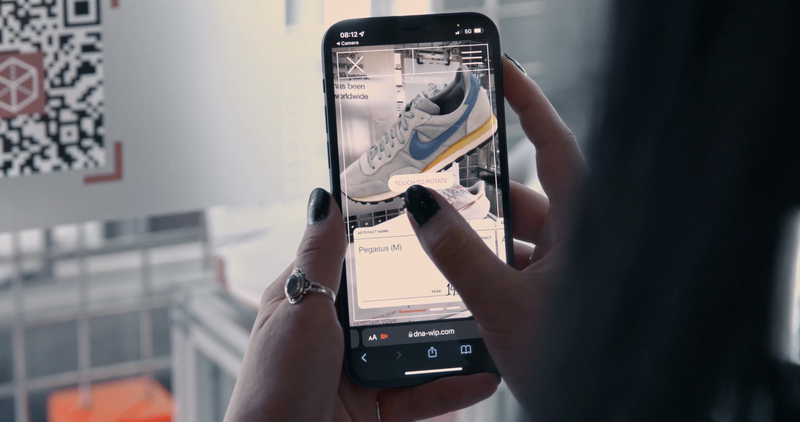
Nike used QR codes to enhance the shopping experience for their customers. In their stores, they placed specific codes on products. When shoppers scanned these codes, they were treated to an augmented reality experience.
This allowed them to see a virtual sneaker design within their real surroundings, giving a fresh and unique view of the product.
II. Uniqlo’s Virtual Fitting Rooms
Uniqlo rolled out “Magic Mirror” technology in some of their stores. Shoppers could scan a QR code to use this feature. It allowed them to virtually see themselves in different colors of a specific clothing item. This meant they didn’t need to physically change outfits, making it easier to decide on a purchase.
III. Kate Spade’s Digital Pop-Up Shops
Kate Spade created digital pop-up shops in New York City. These shops displayed products with accompanying QR codes. Passersby could scan these codes, buy products on the spot, and have them delivered directly to their homes.
IV. Burberry’s Product Storytelling Journey
Burberry added QR codes to some of their products. When customers scanned these codes, they watched videos that shared the brand’s history and the craftsmanship behind the product they had in their hands.
V. Starbucks & McDonald’s Digital Menus
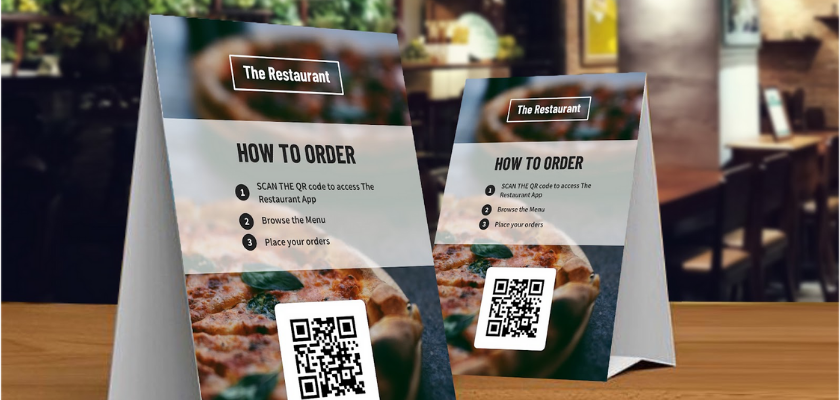
During the peak of the COVID-19 pandemic, Starbucks and McDonald’s adopted QR-code menus. Customers could scan a code on their table, view the menu on their phone, and place an order without touching a physical menu.
VI. Spotify’s Interactive Billboards
Spotify used QR codes on billboards to highlight different artists. People walking by could scan the code and immediately access the artist’s playlist on the app, combining traditional advertising with a quick digital music journey.
VII. Zara’s Feedback Mechanism
Zara added QR codes to their purchase receipts to improve the shopping experience. By scanning the code, customers could quickly give feedback, giving Zara instant feedback on their service quality.
VIII. Patagonia’s Sustainability Transparency
Patagonia, a strong advocate for sustainability, included QR codes on their product tags. By scanning the codes, customers could learn about where materials came from and Patagonia’s dedication to environmental responsibility.
Conclusion
In the fast-paced realm of 2023, QR code marketing has rapidly evolved as a cornerstone for modern businesses. It’s more than just a fad; it’s a compelling bridge between our tangible stores and the expansive digital universe we’re all a part of.
When you introduce a QR code, accessing it should be straightforward and user-friendly. Remember to position the code where it’s easily noticeable and accessible to potential scanners.
Beyond just setting them up, regularly monitor their performance. Track their usage and effectiveness to make sure that they continue to meet your business goals and remain a relevant tool for your audience.
Now, if you’re looking to dive even deeper into the vibrant design world and web development or just seeking ways to make your digital voice heard, swing by Noupe. It’s the perfect pit stop for all things stylish, fresh, and engaging in the digital landscape.
Featured image by Pixabay
The post How To Use QR Codes To Up Your Marketing Game In 2023 appeared first on noupe.
